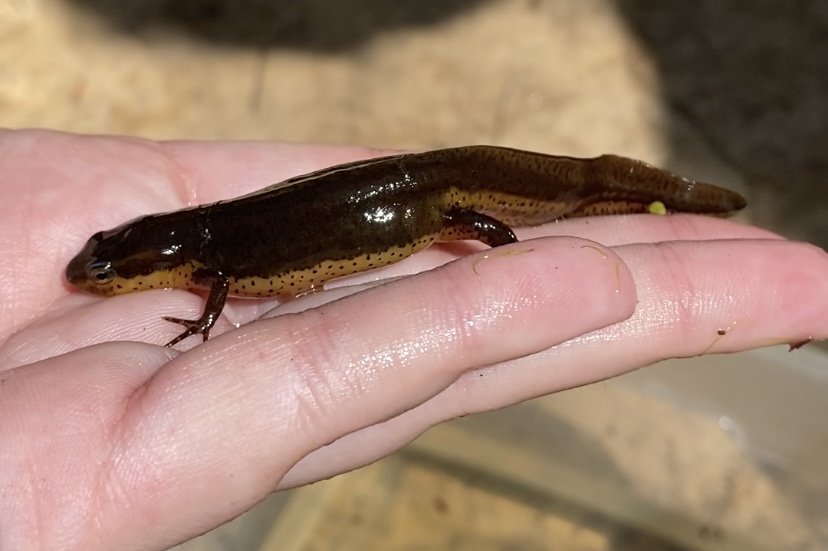On March 21 I found an Eastern Newt (Notophtalmus viridescens) in one of the traps set on a field trip to Caw Caw Interpretive Center. It was a nice surprise since it was the only salamander species that was found that day and it had been a long time since I had seen a salamander in the wild. The trap was in a deeper part of a small swampy area. This specimen was in its final life stage as an aquatic adult female. The eastern newt was identified as a female due to the lack of black horny growths on the hindlimb and toes. The horny growths are present on adult males in the spring during the breeding season, her cloaca and body appeared swollen suggesting she is ready for breeding and may already have some eggs.
Eastern Newts are a species of salamanders with one of the most complex life cycles. The reproductive cycle starts with internal fertilization by a female picking up a spermatophore left by a male. Females will then lay eggs and an aquatic larvae will hatch from them. The aquatic larvae have external gills and a tail fin. The larvae then moves to land losing its gills and tail fin while gaining lungs and very bright orange coloration becoming what is called an eft. Bright red skin glands with black circles around them are present which secrete toxins. These skin glands are most prominent and toxic during this stage. Finally, the eft begins to move back to the water to become an aquatic adult. When becoming an aquatic adult lungs are retained, a tail fin is gained, and the bright orange coloring is lost. Orange is replaced with colors ranging from dark olive to olive and a yellow belly with black spots.


1 comment:
Nice find! In our region, the efts are not brightly colored and are more similar in color to the adults.
Post a Comment